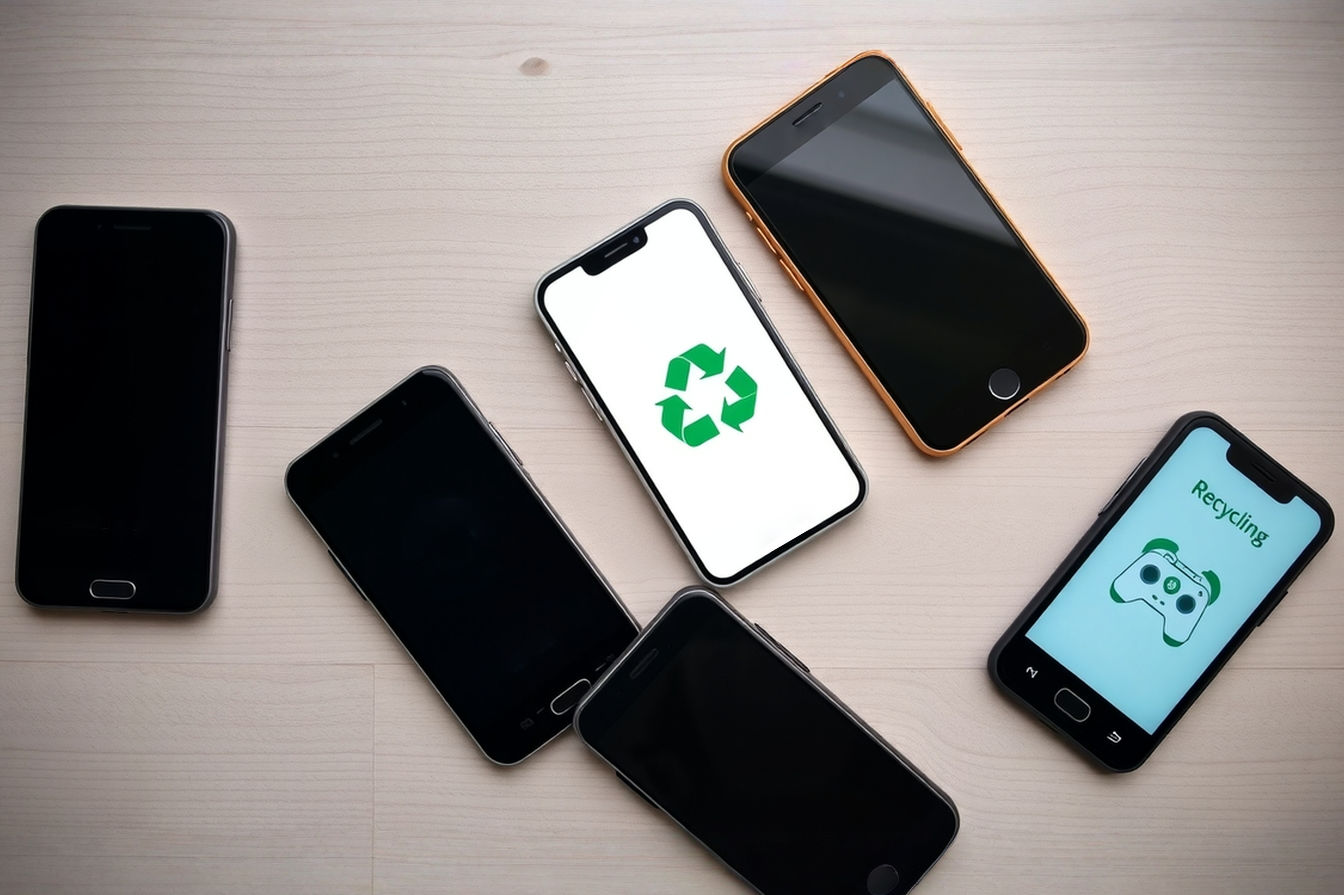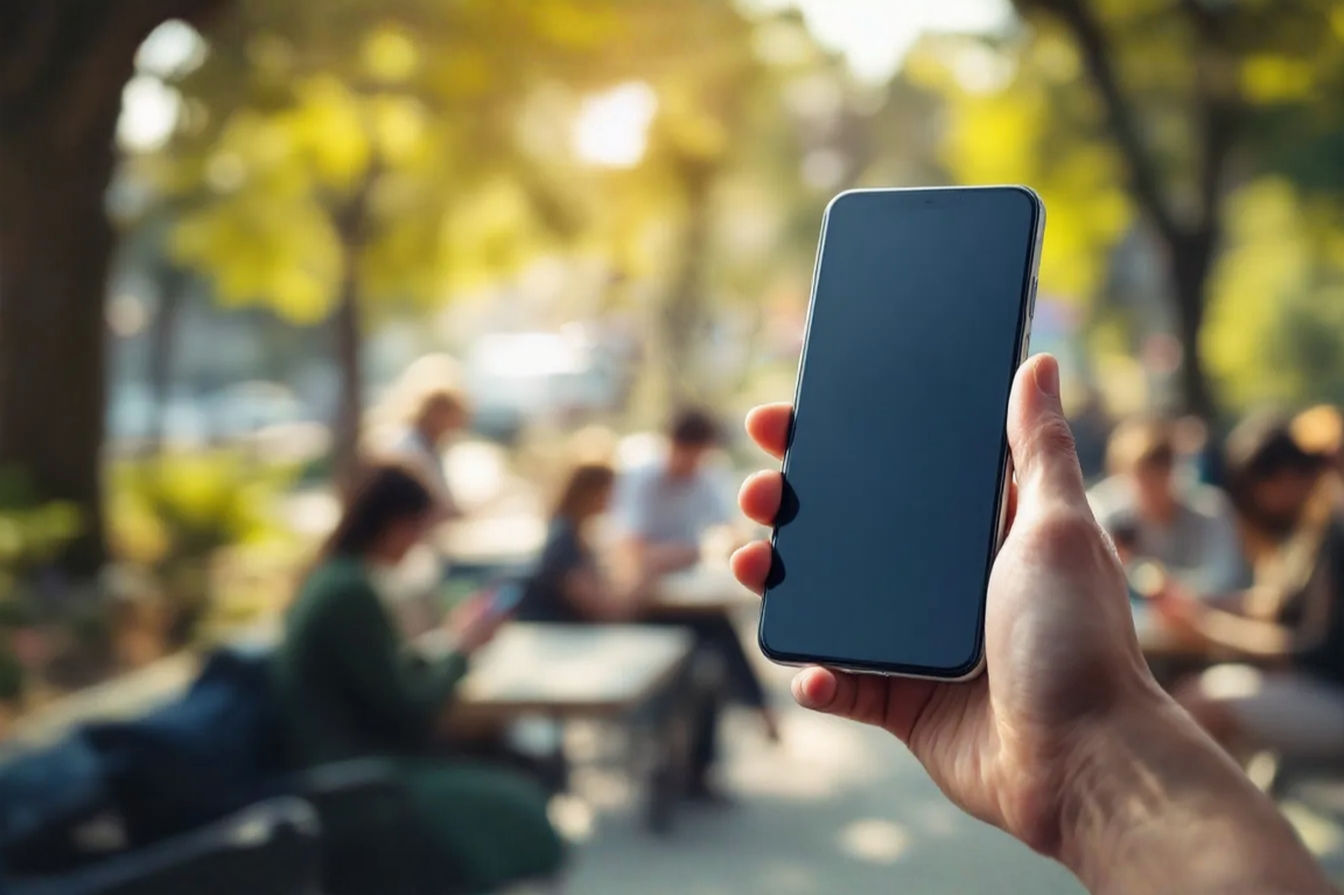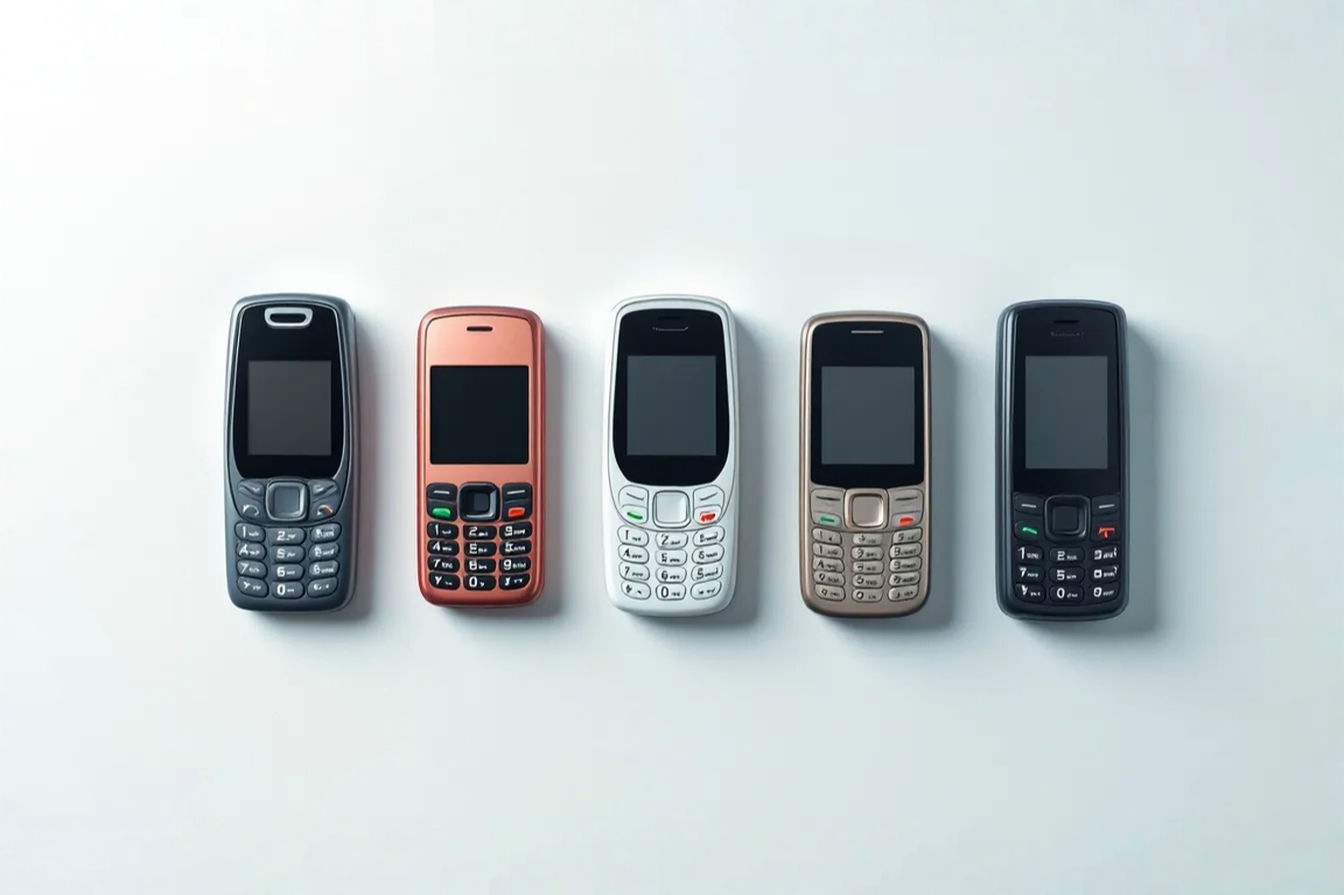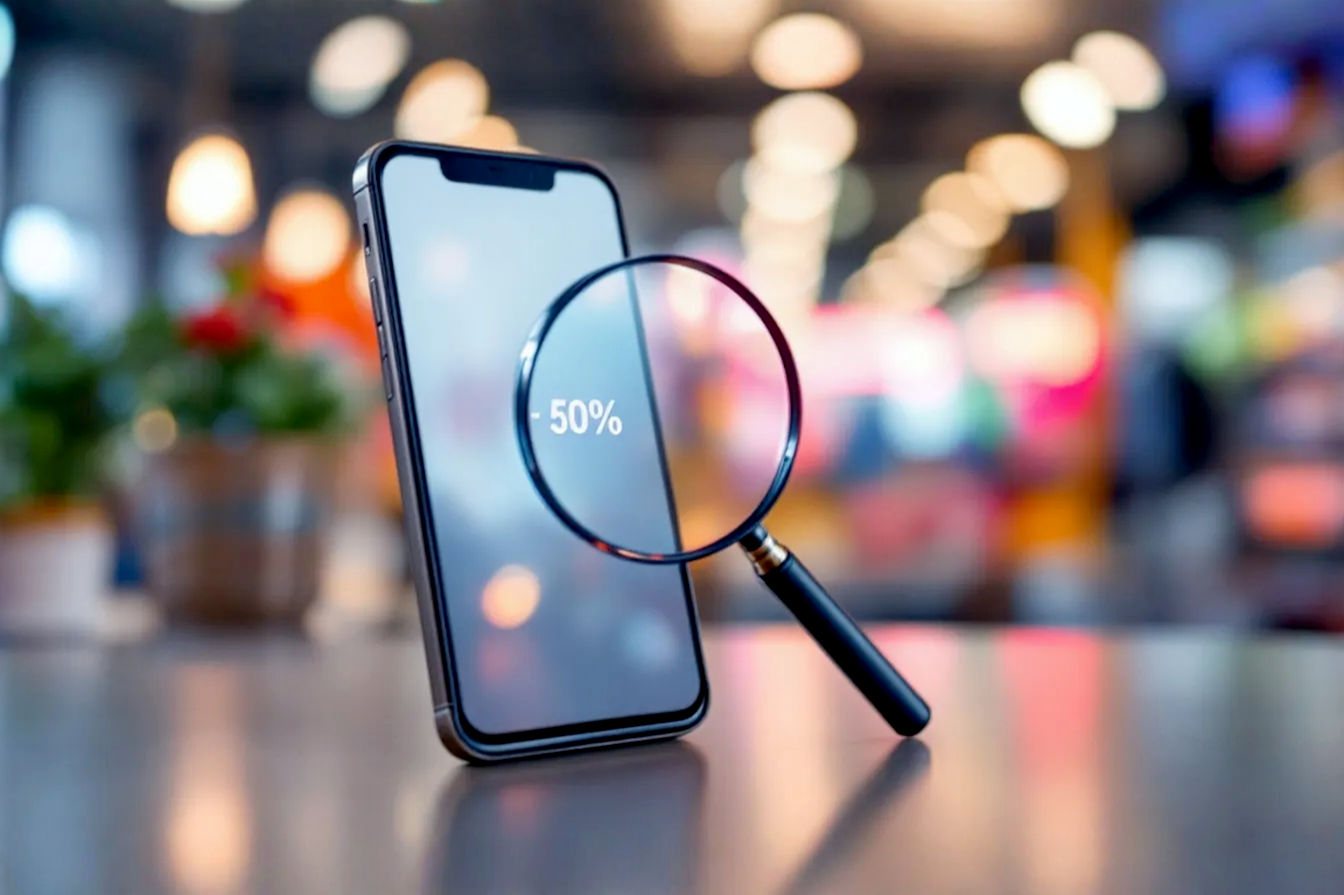This post may contain affiliate links. If you make a purchase through these links, we may earn a commission at no additional cost to you.
In a world where our smartphones are practically glued to our hands, it’s easy to forget they’re also delicate pieces of technology. One accidental drop, a spill of coffee, or an unexpected encounter with dust can spell disaster. For many people, a standard smartphone just isn’t enough. They need a device that can keep up with demanding jobs, adventurous hobbies, or just plain clumsiness. They need a phone that’s built tough.
This isn’t about slapping a bulky case on a regular phone. We’re talking about devices engineered from the ground up to withstand environments and accidents that would turn a typical flagship phone into a paperweight. These are the rugged phones, designed for durability first, packing features that go way beyond just looking sturdy. They’re for construction workers, first responders, outdoor enthusiasts, or anyone who’s ever winced as their phone tumbled towards concrete.
But with so many options claiming to be tough, how do you know which ones truly live up to the hype? We’ve done the research to bring you a breakdown of what makes a phone durable and a list of seven of the most robust smartphones you can buy right now. Get ready to explore the world of phones that laugh in the face of danger.
What Makes a Phone “Built Tough”?
It takes more than just a thick plastic shell to make a phone truly durable. Real ruggedness comes from a combination of specialized design, materials, and certifications. Think of it like building a fortress – you need strong walls, a solid foundation, and defenses against various threats.
At its core, a durable phone is designed to resist ingress from solids (like dust and sand) and liquids (like water), survive drops and impacts, and operate in extreme temperatures. This isn’t just about surviving a light rain shower; it’s about handling immersion in water, being dropped from significant heights onto hard surfaces, and working reliably in freezing cold or scorching heat.
Key features you’ll find in tough phones include high Ingress Protection (IP) ratings, compliance with military standards like MIL-STD-810H, reinforced screens, robust frame construction, and often, extra-large batteries designed to last through long days in the field. Each of these elements plays a crucial role in the phone’s overall resilience.
IP Ratings Explained: Your Phone’s Shield Against Dust and Water
One of the first things you’ll see when looking at a durable phone’s specs is its IP rating. This is a standardized way to measure how well a device is sealed against the intrusion of solid particles and liquids. The “IP” stands for Ingress Protection, and the numbers that follow tell you the specifics.
An IP rating looks like “IPXY,” where ‘X’ is the level of protection against solids, and ‘Y’ is the level of protection against liquids. A higher number means better protection.
The first digit (X) ranges from 0 to 6:
- 0: No protection.
- 1: Protected against solid objects over 50mm (like a hand).
- 2: Protected against solid objects over 12.5mm (like a finger).
- 3: Protected against solid objects over 2.5mm (tools, thick wires).
- 4: Protected against solid objects over 1mm (most wires, screws).
- 5: Protected against dust ingress (limited ingress permitted, no harmful deposits). This means some dust might get in, but not enough to hurt the phone.
- 6: Totally protected against dust ingress. No dust can get in at all. This is the highest level for solids.
The second digit (Y) ranges from 0 to 9K:
- 0: No protection.
- 1: Protected against vertically falling water drops.
- 2: Protected against vertically falling water drops when tilted up to 15 degrees.
- 3: Protected against spraying water (up to 60 degrees from vertical).
- 4: Protected against splashing water from any direction.
- 5: Protected against low-pressure jets of water from any direction.
- 6: Protected against high-pressure jets of water from any direction.
- 7: Protected against immersion in water up to 1 meter for up to 30 minutes. This is where “waterproof” claims often start.
- 8: Protected against continuous immersion in water under conditions specified by the manufacturer, typically deeper than 1 meter and for longer than 30 minutes. This is the highest common level for water immersion.
- 9K: Protected against close-range high-pressure, high-temperature spray downs. This is a very high level of protection often required for vehicles or equipment that need steam cleaning.
So, an IP68 rating, commonly found on durable phones (and even some standard flagships), means the phone is completely dust-tight (6) and can withstand continuous immersion in water beyond 1 meter (8), according to the manufacturer’s specifications. An IP69K rating adds protection against high-pressure, high-temperature water jets, making it suitable for even harsher washdown environments.
Understanding IP ratings helps you gauge a phone’s basic resistance to the elements. It’s a crucial first step in determining its toughness.
MIL-STD-810H Explained: Surviving Shocks, Drops, and Extremes
While IP ratings cover dust and water, the MIL-STD-810H standard takes durability to a whole new level. This is a set of testing guidelines developed by the U.S. Department of Defense to evaluate how well equipment performs under various environmental stresses. When a phone is certified to meet parts of MIL-STD-810H, it means it has been tested against conditions far more challenging than just a dunk in water.
It’s important to note that MIL-STD-810H isn’t a single certification with a pass/fail stamp for everything. It’s a series of test methods (Method 500.x, 516.x, etc.) that simulate different environmental stresses. A manufacturer chooses which specific tests to perform and then states compliance with those methods. So, a phone might be tested for drops (Method 516.8, Procedure IV – Transit Drop) and temperature extremes (Method 501.7 – High Temperature, Method 502.7 – Low Temperature), but not necessarily for everything in the standard.
Common tests rugged phones are subjected to include:
- Shock and Drop (Method 516.8): This is perhaps the most relevant test for everyday durability. It involves dropping the device from a specified height (often 1.2 meters, or about 4 feet) onto various surfaces (plywood over concrete, concrete) and different orientations (faces, edges, corners). Procedure IV, the Transit Drop test, simulates drops that might occur during handling or transport. Passing this test means the phone is likely to survive accidental falls.
- Vibration (Method 514.8): Tests how well the device holds up to vibrations it might experience during transport in vehicles or when mounted on vibrating equipment.
- Temperature Extremes (Methods 501.7, 502.7): Evaluates performance and survival in very high and very low temperatures, both while operating and in storage. This can include rapid temperature changes (Thermal Shock, Method 503.7).
- Humidity (Method 507.6): Tests resistance to humid environments, which can cause corrosion or affect material properties.
- Altitude (Method 500.7): Checks if the device functions correctly at high altitudes, where pressure is lower.
- Other Tests: The standard includes many other tests, such as those for salt fog, sand and dust, immersion, and solar radiation.
When a phone claims MIL-STD-810H compliance, look for which specific methods and procedures were tested. This gives you a clearer picture of its resistance to specific types of stress beyond just water and dust. It’s a strong indicator that the phone is designed to withstand significant physical abuse and harsh environmental conditions.
Screen Protection Technologies: Keeping the Display Intact
The screen is often the most vulnerable part of any smartphone. For a durable phone, protecting the display is paramount. Manufacturers use various technologies and design choices to minimize the risk of scratches, cracks, and shatters.
The most common name you’ll hear in screen protection is Corning® Gorilla® Glass. This isn’t just regular glass; it’s a chemically strengthened alkali-aluminosilicate glass. The strengthening process involves an ion-exchange bath, where smaller sodium ions in the glass are swapped for larger potassium ions from the bath. When the glass cools, these larger ions are compressed into the surface, creating a layer of compressive stress. This compressed layer acts like a protective shield, making the glass much more resistant to damage from drops and scratches.
Different versions of Gorilla Glass offer varying levels of protection. Newer generations, like Gorilla Glass Victus™ (formerly Gorilla Glass 7) and Gorilla Glass Victus® 2, are designed to survive higher drop heights onto harder surfaces (like concrete) and offer improved scratch resistance compared to older versions.
Some ultra-premium or specialized durable phones might use sapphire crystal for the screen cover. Sapphire is an extremely hard material, much harder than Gorilla Glass, making it exceptionally resistant to scratches. However, it’s also more brittle than Gorilla Glass, meaning it can be more prone to shattering upon impact, and it’s significantly more expensive to produce. For this reason, it’s less common on phones compared to Gorilla Glass.
Beyond the glass itself, the design of the phone’s body plays a role. Many durable phones feature a recessed screen, where the edges of the phone’s bezel or frame are slightly raised above the screen surface. This creates a protective lip that helps prevent the screen from hitting the ground directly when dropped face-down. Combined with a tough glass like Gorilla Glass Victus, this design significantly increases the likelihood of the screen surviving a fall.
Some rugged phones also incorporate shatterproof layers beneath the glass or use reinforced plastic screens that are less prone to cracking than glass, though they might be more susceptible to scratches. The goal is always to create a display that can take a hit and keep working.
Frame and Body Construction: The Phone’s Armor
The external structure of a durable phone is its primary defense against physical damage. Manufacturers employ specific materials and construction techniques to build a body that can absorb shocks, resist bending, and maintain its integrity under pressure.
Unlike standard smartphones that often prioritize slimness and premium-feeling materials like glass and polished metal (which can be slippery and prone to breakage), rugged phones focus on resilience. Common materials include:
- Reinforced Plastic: Often a tough, impact-resistant polycarbonate or similar polymer. This material is relatively lightweight but can absorb significant shock and resist cracking.
- Rubberized Coatings: A layer of rubber or elastomer is frequently applied to the exterior, especially on corners and edges. This provides excellent grip, reducing the chance of drops, and acts as a bumper to absorb impact energy when a drop does occur. The rubber helps dissipate the force of the fall rather than letting it transfer directly to the internal components.
- Metal Alloys: While not as common for the entire exterior as plastic or rubber, metal (like aluminum or magnesium alloys) is often used for the internal frame or as protective plates on the exterior. A strong internal frame provides rigidity and prevents the phone from bending or twisting under stress, which could damage components. External metal elements can provide extra protection against punctures or crushing forces.
The construction goes beyond just the materials. Durable phones often feature sealed ports for USB connections and headphone jacks (if they have one). These seals, often rubber or plastic plugs, prevent water and dust from entering the phone’s internals through these openings, maintaining the IP rating. The buttons are also typically sealed and integrated into the tough exterior.
Internally, rugged phones may have extra bracing or shock-absorbing materials around critical components like the battery, camera module, and motherboard. This internal engineering helps protect the delicate electronics from the jarring forces experienced during a drop or vibration. The goal is to create a cohesive, protective shell that safeguards the technology within from the harsh realities of the outside world.
Beyond the Basics: Other Durability Factors
While IP ratings, MIL-STD compliance, screen protection, and body construction are the main pillars of phone durability, other factors contribute to a phone’s ability to survive challenging environments.
- Extreme Temperature Tolerance: Many rugged phones are designed to operate within a much wider temperature range than standard phones. They might function reliably in temperatures well below freezing (e.g., -20°C or -4°F) or in intense heat (e.g., 50°C or 122°F). This is crucial for outdoor work or activities in diverse climates. Standard phone batteries, in particular, can struggle or fail in extreme cold or heat.
- Battery Performance in Extremes: Related to temperature tolerance, the battery itself might be designed or managed to perform better in cold or hot conditions. Extreme cold can drastically reduce battery capacity and performance, while extreme heat can degrade the battery over time. Rugged phones often feature larger batteries, which can help mitigate the effects of temperature on runtime, and sometimes include thermal management systems.
- Glove-Friendly Screens: For users who work outdoors in cold weather or in environments requiring protective gloves, a touch screen that can be operated while wearing gloves is a significant advantage. Many durable phones offer a “glove mode” or enhanced touch sensitivity setting.
- Loud Speakers: Working in noisy environments like construction sites or factories requires a phone with a speaker loud enough to hear calls, alerts, or even media playback over background noise. Rugged phones often feature amplified or front-facing speakers for this purpose.
- Physical Buttons: While most smartphones rely solely on touch screens, some rugged phones retain programmable physical buttons. These can be easier to use with gloves on or in wet conditions where touch screens might be less responsive. These buttons can often be customized to quickly access specific functions like the camera, a push-to-talk app, or a flashlight.
These additional features might seem minor, but they contribute significantly to the usability and reliability of a durable phone in the specific challenging conditions they are designed for. They show that the phone’s design considers the practical needs of users who require more than just basic protection.
The Contenders: The 7 Most Durable Phones Money Can Buy
Now that we know what makes a phone tough, let’s look at some of the best examples currently available. These phones represent the pinnacle of rugged design, each bringing a strong set of durability features to the table.
Choosing just seven is tough, as the market for durable phones is constantly evolving with new models from various manufacturers. Our list focuses on phones that consistently rank high in durability testing, offer robust protection features, and provide a balance of ruggedness with usable smartphone functionality.
Here are our picks for seven of the most durable phones you can buy:
1. Cat S62 Pro
The Cat S62 Pro is a phone built by Bullitt Group under license from Caterpillar Inc., a company synonymous with heavy machinery and durability. This phone isn’t just tough; it also includes a professional-grade thermal camera, making it a favorite for tradespeople.
Cat S62 Pro Rugged Smartphone – North America Version – with FLIR Thermal Imager – Full Warranty in the USA and Canada
-
Wide Carrier Compatibility: Optimized for use with major North American carriers, including AT&T and T-Mobile.
-
Durable Drop Protection: Built to withstand drops from up to 6 feet onto steel surfaces.
-
Extended Battery Life: Provides up to 2 days of use on a single charge.
-
Waterproof Design: Sealed to protect against both water and dust.
-
Advanced Thermal Imaging: Features integrated FLIR technology for enhanced temperature monitoring.
- Key Durability Features: It boasts an IP68 and IP69 rating, meaning it’s fully dust-tight and can handle high-pressure, high-temperature water jets. It’s also MIL-STD-810H certified, specifically tested against thermal shocks, vibration, and tumble tests (surviving multiple drops from 1.8 meters onto steel). The screen is protected by Corning® Gorilla® Glass 6. The body features a high-grade aluminum frame and a non-slip rubberized TPU back.
- Real-World Durability: The Cat S62 Pro is designed to survive repeated drops from up to 1.8 meters (about 6 feet) onto a steel surface. Its IP68 rating means it can be submerged in water up to 1.5 meters for 35 minutes. The IP69 rating makes it ideal for environments that require frequent washdowns.
- Other Notable Features: The integrated FLIR thermal camera is a major selling point, allowing users to visualize heat. It has a decent processor for everyday tasks, a large battery, and supports dual SIMs.
- Pros (Durability-Focused): Excellent IP ratings (68 & 69), high drop resistance (1.8m onto steel), MIL-STD-810H certified for multiple stresses, tough Gorilla Glass 6, robust construction.
- Cons (Durability-Focused): While tough, some competitors offer slightly higher stated drop resistance.
- Why it made the list: Its combination of IP68/IP69 and MIL-STD-810H, plus the high drop rating onto steel, makes it exceptionally resistant to water, dust, temperature, and impacts. The added thermal camera is a unique feature for specific demanding jobs.
2. Kyocera DuraForce Ultra 5G UW
Kyocera has a long history of making rugged devices, and the DuraForce Ultra 5G UW, available on Verizon in the US, is one of their toughest smartphones yet, specifically designed for demanding enterprise and public safety use.
- Key Durability Features: This phone is IP68 rated for dust and water immersion (up to 2 meters for 30 minutes). It meets MIL-STD-810H standards for a comprehensive list of tests including drops (up to 1.5 meters onto concrete), shock, vibration, temperature extremes, blowing rain, low pressure, solar radiation, salt fog, humidity, and more. The display uses Sapphire Shield™, a sapphire-based material that is highly scratch-resistant, and the screen is recessed.
- Real-World Durability: Kyocera highlights its ability to withstand drops up to 1.5 meters (about 5 feet) onto concrete. The Sapphire Shield™ is exceptionally resistant to scratches from keys, tools, or rough surfaces. Its MIL-STD-810H compliance across numerous tests means it’s built to handle a wide range of environmental abuses.
- Other Notable Features: It supports Verizon’s Ultra Wideband 5G network, has a powerful processor, programmable buttons, and can be used with gloves and wet hands. It also supports wireless charging.
- Pros (Durability-Focused): Excellent IP68 rating (deeper immersion than some), extensive MIL-STD-810H testing (including salt fog, solar radiation), highly scratch-resistant Sapphire Shield™ screen, robust construction, designed for harsh environments.
- Cons (Durability-Focused): Stated drop height (1.5m) is slightly less than some competitors. Sapphire Shield is scratch-resistant but can be more prone to shattering than Gorilla Glass on direct impact.
- Why it made the list: Its broad MIL-STD-810H compliance, including resistance to salt fog and solar radiation, makes it suitable for marine or intense outdoor use. The Sapphire Shield™ offers superior scratch resistance, which is vital for users handling tools or working in abrasive environments.
3. Samsung Galaxy XCover Pro
Samsung’s XCover series brings ruggedness to a more mainstream design, offering a balance between durability and typical smartphone features. The Galaxy XCover Pro is a prime example, targeting frontline workers and field professionals.
- Key Durability Features: It has an IP68 rating for dust and water resistance (up to 1.5 meters for 30 minutes). It’s also MIL-STD-810G certified (an earlier version of the standard, but still rigorous) for drops, temperature extremes, humidity, and vibration. The screen is protected by Corning® Gorilla® Glass 6. The phone features a durable body with enhanced shock absorption.
- Real-World Durability: Samsung states it can withstand drops of up to 1.5 meters (about 5 feet). The IP68 rating ensures it can handle rain, spills, and temporary submersion. The MIL-STD-810G certification indicates its resilience against various environmental stresses.
- Other Notable Features: It features a removable battery (a rarity in modern phones, allowing for easy replacement in the field), programmable physical keys, and enhanced touch sensitivity for use with gloves. It also has decent performance and camera capabilities for a rugged phone.
- Pros (Durability-Focused): IP68 and MIL-STD-810G certified, good drop resistance (1.5m), tough Gorilla Glass 6, removable battery adds to longevity and field serviceability, more streamlined design than some bulky rugged phones.
- Cons (Durability-Focused): Uses the older MIL-STD-810G standard, not the latest 810H. Drop height is comparable but not superior to some others.
- Why it made the list: It successfully blends significant ruggedness (IP68, MIL-STD-810G, 1.5m drop) with a more user-friendly design and features like a removable battery. This makes it a great option for those who need durability but don’t want the bulk of some dedicated rugged devices.
4. Ulefone Power Armor 14 Pro
Ulefone is a brand known for specializing in rugged smartphones, often packing massive batteries and extreme durability features. The Power Armor 14 Pro is a notable entry, balancing ruggedness with a huge battery capacity.
- Key Durability Features: It holds an IP68 and IP69K rating, offering comprehensive protection against dust, water immersion (up to 1.5 meters for 30 minutes), and high-pressure, high-temperature water jets. It is also MIL-STD-810G certified against drops, shocks, extreme temperatures, humidity, and more. The screen uses Corning® Gorilla® Glass, though the specific version isn’t always clearly stated. The body is constructed with reinforced TPU and aluminum alloy.
- Real-World Durability: Ulefone claims it can survive drops from up to 1.5 meters (about 5 feet). The IP68/IP69K ratings mean it’s highly resistant to water and dust ingress, including demanding washdown scenarios. The MIL-STD-810G certification confirms its ability to handle various environmental abuses.
- Other Notable Features: The standout feature is its enormous 10,000mAh battery, offering multi-day usage. It supports wireless charging and reverse wireless charging. It has a decent camera system for a rugged phone and runs a relatively clean Android version.
- Pros (Durability-Focused): Excellent IP68/IP69K ratings, MIL-STD-810G certified, 1.5m drop resistance, robust build materials. The massive battery is a durability feature in itself, ensuring power in remote locations.
- Cons (Durability-Focused): Uses the older MIL-STD-810G standard. Specific Gorilla Glass version isn’t always specified. It is quite large and heavy due to the battery and rugged build.
- Why it made the list: Its combination of IP68/IP69K, MIL-STD-810G, and a substantial drop rating makes it very tough. The huge 10,000mAh battery is a significant advantage for users who need a phone that lasts for extended periods without charging, which is often the case in challenging environments.
5. Blackview BV9200
Blackview is another brand focusing on the rugged phone market, often pushing the boundaries of durability features. The BV9200 stands out with its focus on audio quality alongside its tough build.
- Key Durability Features: It features IP68 and IP69K ratings for dust and water protection (IP68 tested for 1.5 meters depth for 30 minutes). It meets MIL-STD-810H standards, tested for drops, shocks, vibration, temperature extremes, humidity, and more. The screen is protected by Corning® Gorilla® Glass 5. The body incorporates a robust frame and reinforced corners.
- Real-World Durability: Blackview states it can survive drops from up to 1.8 meters (about 6 feet). The IP68/IP69K ratings ensure it’s highly resistant to water and dust, including high-pressure washdowns. The MIL-STD-810H certification confirms its resilience against a wide array of environmental stresses.
- Other Notable Features: It boasts Harman Kardon tuned dual speakers for surprisingly good audio quality for a rugged phone. It has a large battery with fast wired and wireless charging, a capable processor, and a 120Hz refresh rate display (uncommon in rugged phones).
- Pros (Durability-Focused): Excellent IP68/IP69K ratings, MIL-STD-810H certified, high drop resistance (1.8m), robust build.
- Cons (Durability-Focused): Gorilla Glass 5 is good, but not the latest or toughest version.
- Why it made the list: It offers top-tier IP and MIL-STD ratings with a high 1.8m drop resistance, making it genuinely tough. The inclusion of features like a 120Hz display and Harman Kardon audio sets it apart, offering a better user experience than many other rugged phones without sacrificing durability.
6. Doogee S97 Pro
Doogee is another player in the rugged phone space, often known for unique features and competitive pricing. The S97 Pro includes a laser rangefinder, adding a practical tool for certain professions alongside its rugged design.
- Key Durability Features: It is IP68 and IP69K rated for comprehensive dust and water protection (IP68 tested for 1.5 meters depth for 30 minutes). It meets MIL-STD-810G standards for drops, shocks, temperature extremes, and more. The screen uses Corning® Gorilla® Glass, though the specific version is often not specified. The body features a reinforced structure with protective corners.
- Real-World Durability: Doogee claims it can withstand drops from up to 1.5 meters (about 5 feet). The IP68/IP69K ratings ensure it’s highly resistant to water and dust, including high-pressure washdowns. The MIL-STD-810G certification indicates its resilience against various environmental stresses.
- Other Notable Features: The integrated 40m laser rangefinder is a unique and useful tool for construction, surveying, or other jobs requiring distance measurements. It has a large 8500mAh battery and supports fast charging.
- Pros (Durability-Focused): Excellent IP68/IP69K ratings, MIL-STD-810G certified, 1.5m drop resistance, robust build. The laser rangefinder adds functional durability for specific tasks.
- Cons (Durability-Focused): Uses the older MIL-STD-810G standard. Specific Gorilla Glass version is often not specified. Can be bulky.
- Why it made the list: It provides strong core durability with IP68/IP69K and MIL-STD-810G compliance and a solid drop rating. The integrated laser rangefinder makes it uniquely valuable for users needing that specific tool, combining utility with ruggedness.
7. Unihertz Tank
Unihertz is known for making unique, often niche, smartphones. The “Tank” lives up to its name, prioritizing an absolutely massive battery and extreme build quality, even if it means being incredibly bulky.
- Key Durability Features: It is IP68 rated for dust and water immersion (up to 1.5 meters for 30 minutes). It is also MIL-STD-810G certified for drops, shocks, temperature extremes, and more. The screen uses Corning® Gorilla® Glass, though the specific version is often not specified. The body is exceptionally thick and built with heavy-duty materials, including reinforced plastic and metal elements.
- Real-World Durability: While a specific drop height isn’t always prominently advertised, the sheer bulk and construction of the Tank suggest it can withstand significant impacts. The IP68 rating ensures it can handle water and dust. The MIL-STD-810G certification verifies its resistance to various environmental stresses.
- Other Notable Features: The most striking feature is its colossal 22,000mAh battery, providing potentially weeks of standby time. It also features an incredibly bright 1200-lumen flashlight built into the back, useful in dark environments. It supports fast charging and reverse wired charging.
- Pros (Durability-Focused): IP68 and MIL-STD-810G certified, extremely robust and thick build, massive battery contributes to reliability in the field. The sheer physical presence suggests high impact resistance.
- Cons (Durability-Focused): Uses the older MIL-STD-810G standard. Specific Gorilla Glass version is often not specified. It is exceptionally large and heavy, making it less pocketable than any other phone on this list.
- Why it made the list: While perhaps less refined than some others, the Unihertz Tank’s sheer physical build and enormous battery make it a unique contender for ultimate field longevity and apparent toughness. It’s a phone designed for survival above all else.
How to Choose the Right Durable Phone For You
Selecting the best durable phone isn’t just about picking the one with the highest numbers. You need to consider your specific needs and how you plan to use the phone.
- Identify Your Environment: What kind of hazards will your phone face? Is it primarily drops onto hard surfaces, exposure to water and dust, extreme temperatures, or a combination? If you work in construction, drop resistance and dust protection are key. If you’re often near water, a high IP rating is essential. If you work in freezing or scorching conditions, temperature tolerance matters.
- Consider Your Job or Hobby: Do you need specific features like a thermal camera (Cat S62 Pro), a laser rangefinder (Doogee S97 Pro), or the ability to use the phone with gloves (Kyocera, Samsung)? If you need multi-day battery life in remote areas, a phone like the Ulefone Power Armor 14 Pro or Unihertz Tank might be necessary.
- Balance Durability with Usability: How important are factors like size, weight, camera quality, and processing power? Some rugged phones are significantly bulkier and heavier than standard smartphones. Their cameras and processors might also not be as powerful. Decide what compromises you’re willing to make for increased durability. A phone like the Samsung Galaxy XCover Pro offers a good balance if you need some ruggedness without extreme bulk.
- Set a Budget: Durable phones vary in price. Determine how much you’re willing to spend, keeping in mind that investing in a truly rugged phone can save you money on repairs or replacements in the long run.
- Check Specific Certifications: Don’t just look for “MIL-STD-810H certified.” Find out which specific tests were passed. This gives you a much clearer picture of the phone’s capabilities. Similarly, understand what the IP numbers mean for your specific needs.
By evaluating these factors, you can narrow down your options and choose a durable phone that not only survives your environment but also meets your practical needs.
Are Rugged Phones Worth It for Everyday Use?
This is a common question. If you’re not working on a construction site or hiking mountains every weekend, does a rugged phone make sense?
For most people using their phone in an office, at home, or for casual outings, a standard smartphone with a good case and screen protector offers sufficient protection. Rugged phones come with trade-offs:
- Size and Weight: They are almost always significantly larger and heavier than non-rugged phones due to the extra protective materials and often larger batteries. Carrying one in your pocket can be cumbersome.
- Aesthetics: While designs are improving, rugged phones generally don’t have the sleek, premium look of flagship smartphones. They look, well, rugged.
- Performance and Camera: To keep costs down or prioritize battery size and ruggedness, the processors and camera systems on rugged phones are often not as powerful or advanced as those found in high-end standard phones.
- Price: While some rugged phones are competitively priced, the most durable ones can be expensive.
However, there are situations where a rugged phone might be worth it even for seemingly “everyday” use:
- Accident Prone: If you are notoriously clumsy and frequently drop your phone, a rugged device could save you a lot of money and hassle in repairs.
- Kids and Pets: If your phone is often within reach of young children or active pets, a rugged phone can withstand the inevitable drops, spills, and curious handling much better.
- Peace of Mind: Knowing your phone can survive unexpected accidents can provide significant peace of mind, allowing you to use your device more freely without constant worry.
Ultimately, the decision depends on your personal risk factors and tolerance for the trade-offs. If the potential for damage is high in your daily life, or if the peace of mind is worth the extra bulk and potentially lower specs, a rugged phone could be a smart choice.
Maintaining Your Durable Phone
Even the toughest phones benefit from basic care to ensure their longevity and maintain their protective seals.
- Clean Regularly: Dust, dirt, and grime can accumulate in ports and around seals over time. Use a soft brush or compressed air to clean out ports. Wipe down the phone with a damp cloth (using mild soap if necessary) to remove surface dirt. Ensure ports are sealed before cleaning with liquids.
- Check Seals: Periodically inspect the rubber or plastic seals covering ports. Ensure they are free of debris and properly seated when closed. Damaged or improperly closed seals can compromise the phone’s water and dust resistance.
- Avoid Extreme Chemicals: While rugged phones are resistant to many things, avoid exposing them to harsh chemicals, solvents, or corrosive substances unless the manufacturer specifically states they are resistant.
- Handle with Care (Still!): While they can survive drops, repeatedly dropping any device, no matter how tough, will eventually take its toll. Try to avoid unnecessary drops or impacts.
- Follow Manufacturer Instructions: Always refer to the phone’s user manual for specific cleaning instructions, temperature limits, and depth ratings for water immersion.
Taking these simple steps can help ensure your “built tough” phone remains in top condition and continues to protect itself against the elements and accidents it was designed to withstand.
Conclusion
For those who need a smartphone that can survive where others fail, the market offers a range of genuinely durable options. These aren’t just phones in thick cases; they are engineered with specialized materials, sealed bodies, and tested against rigorous standards like IP ratings and MIL-STD-810H.
We’ve explored what makes these phones tough, from reinforced screens and robust frames to certifications that prove their resilience against dust, water, drops, and extreme temperatures. Our list of seven top contenders – including the Cat S62 Pro, Kyocera DuraForce Ultra 5G UW, Samsung Galaxy XCover Pro, Ulefone Power Armor 14 Pro, Blackview BV9200, Doogee S97 Pro, and Unihertz Tank – showcases the variety available, each with its own strengths and unique features.
Choosing the right one means considering your specific needs, environment, and desired balance between ruggedness and everyday usability. While they might not be for everyone, for those whose lives or jobs demand a device that can take a beating and keep going, a truly durable phone is an invaluable tool. Investing in a tough phone means investing in reliability, peace of mind, and a device that won’t quit when things get rough.







